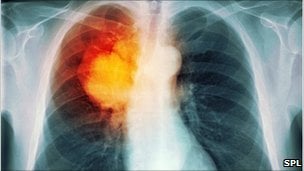Air pollution, an insidious threat to public health, particularly in rapidly developing urban areas, is increasingly recognized as a significant contributor to lung cancer. Cities grappling with heavy traffic, industrial emissions, and construction activities often experience elevated levels of particulate matter 2.5 (PM2.5), a microscopic pollutant that penetrates deep into the respiratory system and bloodstream. Classified as a Group 1 carcinogen by the World Health Organization, PM2.5 poses a comparable cancer risk to tobacco smoke and asbestos. This poses a critical challenge for lung cancer specialists, including medical and radiation oncologists, who must navigate the complex interplay between environmental factors and lung cancer development. Understanding the mechanisms by which environmental toxins contribute to carcinogenesis is crucial for effective patient care and advocacy for cleaner air.
The insidious nature of air pollution lies in its ability to silently inflict damage on the respiratory system. PM2.5, a major component of air pollution, triggers inflammation, oxidative stress, and DNA damage within the lungs. This cascade of biological insults can initiate and promote the development of lung cancer over time. The risks are further amplified by indoor pollutants, such as smoke from biomass fuels commonly used for cooking, and occupational exposures to hazardous substances like asbestos and diesel fumes. In densely populated urban environments, vehicle emissions and industrial discharges are primary sources of PM2.5, while inadequate ventilation and reliance on traditional fuels can create hazardous indoor air quality in households. The cumulative effect of these exposures significantly increases the risk of lung cancer, even in non-smokers.
The pathways of exposure to environmental toxins are diverse and often overlapping. Urban dwellers are constantly exposed to PM2.5 from vehicle exhaust, construction dust, and industrial emissions, leading to a gradual accumulation of these particles in the lungs. Indoor exposure, particularly in poorly ventilated homes where biomass fuels are used for cooking, poses a significant risk, especially to non-smoking women. Occupational exposures are another major concern, with workers in industries like construction, mining, and transportation facing elevated risks due to their contact with toxins such as silica, asbestos, and diesel fumes. Without adequate protective measures, these exposures can trigger chronic inflammation, DNA mutations, and disruptions in cell regulation, ultimately leading to lung cancer over extended periods.
The detrimental effects of air pollution extend beyond lung cancer, contributing to a range of respiratory and cardiovascular conditions that complicate cancer diagnosis and treatment. PM2.5 exposure is strongly linked to chronic obstructive pulmonary disease (COPD), asthma, and respiratory infections, which can mimic or exacerbate lung cancer symptoms. Furthermore, PM2.5’s ability to enter the bloodstream contributes to cardiovascular issues, adding another layer of complexity to treatment planning for oncologists. This interconnectedness of health impacts underscores the importance of considering environmental factors in patient care strategies.
Mitigating the health risks associated with air pollution requires a multi-pronged approach involving individual actions, community initiatives, and policy interventions. Individuals can take practical steps to reduce their exposure by ensuring adequate ventilation in their homes, using chimneys or exhaust fans while cooking, and avoiding the burning of wood, coal, or kerosene indoors. Limiting outdoor exposure during periods of high pollution, wearing appropriate masks (N95 or equivalent) when necessary, and avoiding strenuous outdoor exercise in smoggy conditions are also recommended. Creating smoke-free environments, both indoors and outdoors, is crucial, which includes avoiding active and passive tobacco smoke, incense smoke in poorly ventilated spaces, and occupational dust or fumes without proper protective gear.
At a broader level, policy and regulatory measures are essential for addressing the root causes of air pollution. Strengthening the enforcement of emission norms, accelerating the transition to cleaner vehicles, and implementing pollution control technologies in power plants are key steps. Targeted urban action plans, including hotspot monitoring and mitigation strategies such as dust reduction and industrial zoning, can further contribute to improving air quality. By raising public awareness about the health risks of air pollution, promoting preventive health check-ups, and advocating for cleaner air policies, communities can collectively protect lung health and safeguard future generations from this preventable tragedy. The pursuit of cleaner air is a vital imperative for healthier lungs, happier lives, and a sustainable future.














